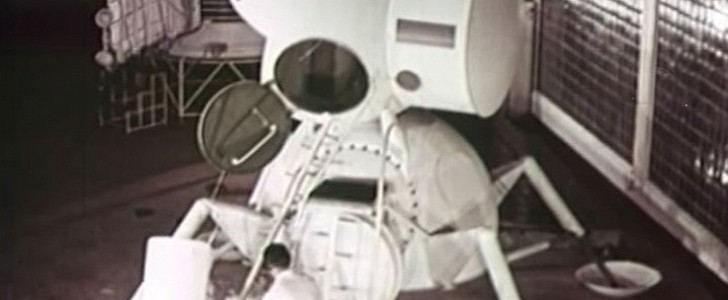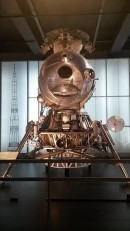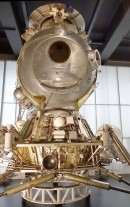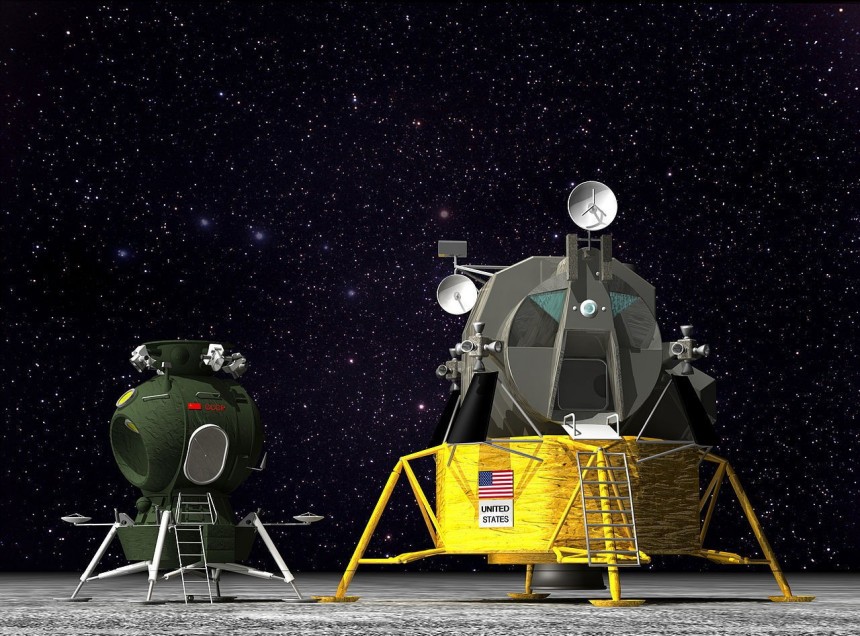It's said that the metal that made up the outer skin of the Apollo Lunar Excursion Module was no thicker than a couple of soda cans stacked on top of each other. How it never failed even once is beyond us. But if you think the LEM looked like a screaming metal deathtrap, imagine a similar Soviet spacecraft half the size and more claustrophobic.
This is the story of LK, the Soviet answer to Apollo's LEM. Let's take a look at why this prized piece of communist tech never made its way to the Lunar surface. For those of you unfamiliar with the Soviet space program in the era of the first space race, it had a similar approach to NASA in Lunar exploration in some ways and was completely different in others.
Where NASA had a titan of the old German war machine in Wernher Von Braun, the Soviets had a space architect extraordinaire of their own in Sergei Korolev. Where Von Braun designed the titanic Saturn V Heavy Launch Vehicle to take Americans to the Moon, Korelev's N1 planned to do the same with more engines than Elon Musk's most severe fever dream.
Long story short, the N1 launched four times, and four times it failed spectacularly. Somehow, not a single casualty was reported in the process. But had the design for the N1 not been so eager to crash or explode, the Soviets would have sent Cosmonauts to the surface of the Moon in this, the Lunniy Korabyl (LK), or "Lunar Craft" in English.
Designed by the Yuzhnoye Design Office of Dnipro, Ukraine, the LK was manufactured 4,760 miles (7,661 km) across the globe from where NASA's own lunar lander, the LEM, was built in a small Long Island, New York suburb called Bethpage by Grumman Aerospace. The distance is almost poetic, considering how different the two piece of hardware are.
Though later untested prototypes called for a standard two-man crew, the original LK was designed to feature a single-man landing on the lunar surface. In some aspects, like life support, this could potentially be seen as a benefit. But remember that both Neil Armstrong and Buzz Aldrin were extensively trained on how to control the LEM in a Lunar de-orbit and landing scenario.
This would prove pivotal for Apollo 11 in the end, as when the LEM's descent stage was low on fuel, Armstrong was able to pilot the spacecraft down to the surface while Aldrin kept an eye on the horizon, troubleshooting the LEM computer as needed. In the end, it was the dynamic teamwork of a two-man crew that kept Apollo 11 from becoming a much more somber event.
Of course, the Soviets had some brilliant pilots of their own. There's every reason to suspect that an experienced Cosmonaut like Alexie Leonov would get the call to pilot the Soviet LK down to a predetermined spot on the surface of the Moon. Leonov was respected even by NASA pilots in his day for his cunning ability to handle pressure in high-stress situations.
He was the first man in history to perform an EVA for just this reason. But even the greatest pilots can make mistakes. A lack of a second crew member to come to the pilot's aid in an emergency has dubious prospects when you're 20 meters from the Lunar surface and running out of fuel as Apollo 11 was. Assuming everything goes to plan, much like the LEM, a Cosmonaut would spend a limited amount of time on the surface, plant a flag, do some science and then hop back in the LK.
With the flick of some switches, the craft's 11D410 ascent/decent engine would ignite, separating from the decent stage much like the LEM. Using 20 kN (4,500 lbf) of max trust, it would return to the same command module it used to transit to Lunar orbit. By the way, Roscosmos expected people to EVA between said command module and the LK. With Leonov at the helm, that shouldn't have been too much of an issue.
At least three LKs were tested in Low Earth Orbit, but none reached the Lunar surface outside of conspiracy theories and mediocre horror movies. As suspect as its design may sound to the average Joe, and even with all its shortcomings, historians agree that at the very least, LK was very likely capable of bringing Cosmonauts to the Moon. But because Sergei Korolev tragically died in 1966 and NASA smashed the Soviets to the Moon in 1969, interest in a Soviet Lunar program fizzled into virtually nothing.
No sooner was the Kremlin finished at Baikonur cleaning up the mess of four consecutive N1 explosions, the program was canceled in its entirety.
Where NASA had a titan of the old German war machine in Wernher Von Braun, the Soviets had a space architect extraordinaire of their own in Sergei Korolev. Where Von Braun designed the titanic Saturn V Heavy Launch Vehicle to take Americans to the Moon, Korelev's N1 planned to do the same with more engines than Elon Musk's most severe fever dream.
Long story short, the N1 launched four times, and four times it failed spectacularly. Somehow, not a single casualty was reported in the process. But had the design for the N1 not been so eager to crash or explode, the Soviets would have sent Cosmonauts to the surface of the Moon in this, the Lunniy Korabyl (LK), or "Lunar Craft" in English.
Designed by the Yuzhnoye Design Office of Dnipro, Ukraine, the LK was manufactured 4,760 miles (7,661 km) across the globe from where NASA's own lunar lander, the LEM, was built in a small Long Island, New York suburb called Bethpage by Grumman Aerospace. The distance is almost poetic, considering how different the two piece of hardware are.
This would prove pivotal for Apollo 11 in the end, as when the LEM's descent stage was low on fuel, Armstrong was able to pilot the spacecraft down to the surface while Aldrin kept an eye on the horizon, troubleshooting the LEM computer as needed. In the end, it was the dynamic teamwork of a two-man crew that kept Apollo 11 from becoming a much more somber event.
Of course, the Soviets had some brilliant pilots of their own. There's every reason to suspect that an experienced Cosmonaut like Alexie Leonov would get the call to pilot the Soviet LK down to a predetermined spot on the surface of the Moon. Leonov was respected even by NASA pilots in his day for his cunning ability to handle pressure in high-stress situations.
He was the first man in history to perform an EVA for just this reason. But even the greatest pilots can make mistakes. A lack of a second crew member to come to the pilot's aid in an emergency has dubious prospects when you're 20 meters from the Lunar surface and running out of fuel as Apollo 11 was. Assuming everything goes to plan, much like the LEM, a Cosmonaut would spend a limited amount of time on the surface, plant a flag, do some science and then hop back in the LK.
At least three LKs were tested in Low Earth Orbit, but none reached the Lunar surface outside of conspiracy theories and mediocre horror movies. As suspect as its design may sound to the average Joe, and even with all its shortcomings, historians agree that at the very least, LK was very likely capable of bringing Cosmonauts to the Moon. But because Sergei Korolev tragically died in 1966 and NASA smashed the Soviets to the Moon in 1969, interest in a Soviet Lunar program fizzled into virtually nothing.
No sooner was the Kremlin finished at Baikonur cleaning up the mess of four consecutive N1 explosions, the program was canceled in its entirety.








